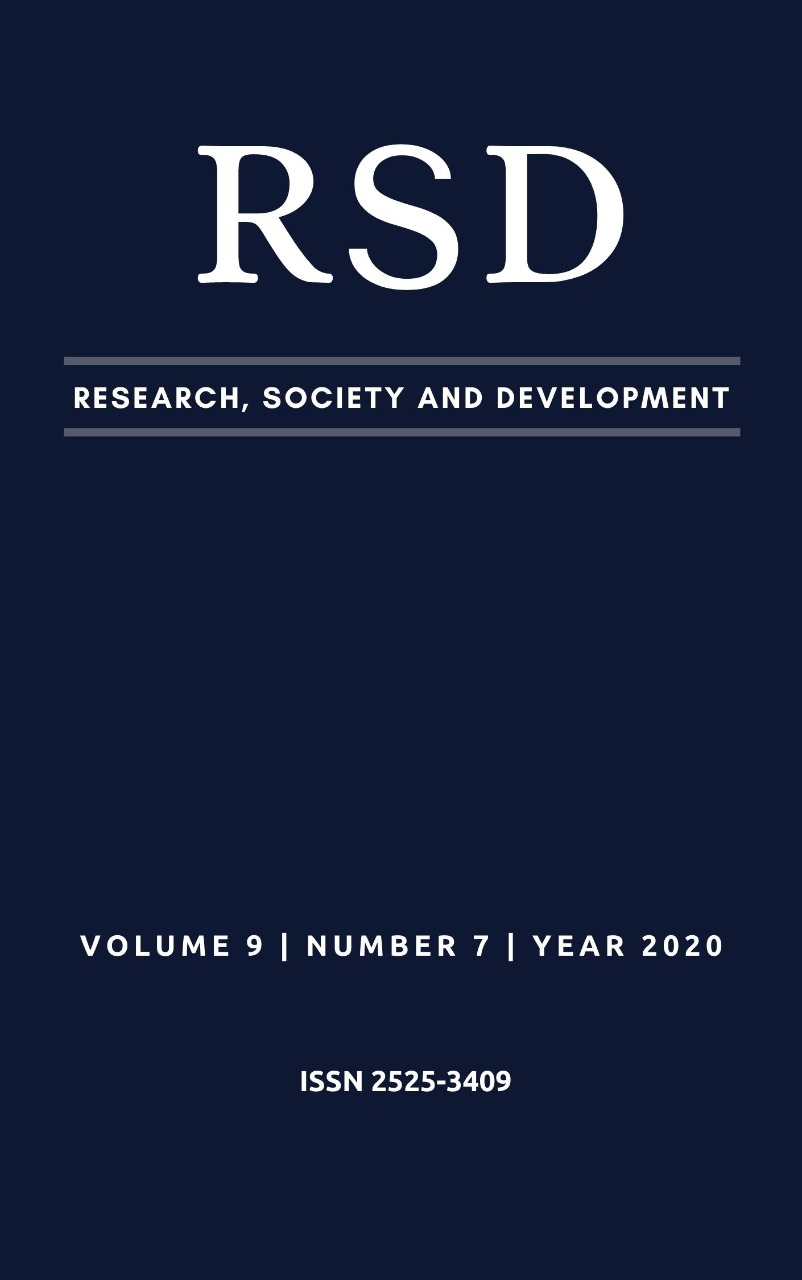Beneficios del método Pilates para mujeres posmenopáusicas: revisión sistemática
DOI:
https://doi.org/10.33448/rsd-v9i7.4086Palabras clave:
Salud de la mujer, Climaterio, Ejercicio físico, Método Pilates.Resumen
Introducción: el climaterio es un período en el ciclo de vida de la mujer representado por el paso entre el período reproductivo y no reproductivo, en el cual ocurre la menopausia. En esta fase, se producen varios cambios fisiológicos, como síntomas vasomotores y psicológicos, trastornos del sueño, osteoporosis y pérdida de masa muscular. Objetivo: identificar los principales beneficios que ofrece la práctica del método Pilates para mujeres posmenopáusicas. Materiales y métodos: revisión sistemática realizada en las bases de datos LILACS, MedLine, PubMed y SciELO, utilizando los descriptores "Método Pilates" y "menopausia". Se incluyeron estudios publicados desde 2010, en portugués, inglés y español, que utilizan el entrenamiento de Pilates con mujeres posmenopáusicas. La calidad metodológica de los artículos encontrados se evaluó mediante la escala PEDro. Resultados: solo se seleccionaron tres ensayos clínicos controlados y aleatorizados, con una muestra que varía entre 41 y 110 participantes y una edad media entre 59 y 69 años. En todos los estudios, el tiempo para cada sesión fue de 60 minutos y la frecuencia fue dos veces por semana. Dos estudios utilizaron un protocolo de 12 semanas y uno adoptó un programa de ejercicio de 30 semanas. Todos fueron considerados de buena calidad metodológica por la escala PEDro. Conclusión: los principales resultados encontrados muestran que la práctica del método Pilates puede influir en el equilibrio, la postura, el sueño, la ansiedad y la depresión, la fatiga y la función respiratoria en mujeres posmenopáusicas.
Referencias
Aibar-Almazán, A, Hita-Contreras, F, Cruz-Diaz, D, Torre-Cruz, M, Jimenez-Garcia, JD & Martinez-Amat, A. (2019). Effects of Pilates training on sleep quality, anxiety, depression and fatigue in postmenopausal women: A randomized controlled trial. Maturitas, 124, 62-67.
Aibar-Almazán, A, Martinez-Amat, A, Cruz-Diaz, D, Torre-Cruz, M, Jimenez-Garcia, JD, Zagalaz-Anula, N, Pérez-Herrezuelo, I & Hita-Contreras, F. (2019). Effects of Pilates on fall risk factores in Community-dwelling elderly women: A randomized, controlled trial. Eur J Sport Sci, 19(10), 1386-1394.
Alves, ERP, Costa, AM, Bezerra, SMMS, Nakano, AMS, Cavalcanti, AMTS & Dias, MD. (2015). Climatério: a intensidade dos sintomas e o desempenho sexual. Texto Contexto Enferm, 24(1), 64-71.
Barcia, JM. (2011). Síntomas vasomotores em la mujer climatérica. Rev Cubana Obstet Ginecol, 37(4), 577-592.
Bertoldi, JT, Medeiros, AM & Goulart, SO. (2015). A influência do método pilates na musculatura do assoalho pélvico em mulheres no climatério: estudo de caso. Cinergis, 16(4), 255-260.
Campos, HH, Bittencourt, LRA, Haidar, MA, Tufik, S, & Baracat, EC. (2005). Prevalência de distúrbios do sono na pós-menopausa. Rev Bras Ginecol Obstet, 27(12), 731-736.
Janssen, I, Heymsfield, SB, Wang, ZM & Ross, R. (2000). Skeletal muscle mass and distribution in 468 men and women aged 18-88 yr. J Appl Physiol, 89(1), 81-88.
Junges, S, Molina, RD, Sartori, J, Ferreira, L, & Silva Filho, IG. (2017). Mudança da pressão expiratória com a aplicação do método Pilates em mulheres adultas com hipercifose. Fisioter Bras, 18(5), 643-649.
Kupperman, HS, Blatt, MH, Wiesbader, H & Filler, W. (1953). Comparative clinical evaluation of estrogenic preparations by the menopausal and amenorrheal indices. J Clin Endocrinol Metab, 13(6), 688-703.
Liberati, A, Altman, DG, Tetzlaff, J, Mulrow, C, Gøtzsche, PC, Ioannidis, JPA, Clarke, M, Devereaux, PJ, Kleijnen, J & Moher, D. (2009). The PRISMA Statement for Reporting Systematic Reviews and Meta-Analyses of Studies That Evaluate Health Care Interventions: Explanation and Elaboration. PloS Med, 6(7), e1000100.
Lins-Filho, OL, Queiroz, GKF, Santos, JFJ, Santos, MAM, Oliveira, LMFT & Farah, BQ. (2019). Efeitos do Pilates na qualidade do sono em adultos e idosos: uma revisão sistemática. Rer Bras Ativ Fis Saúde, 24, e0080.
Lopes, MEL, Costa, SFG, Gouveia, EML, Evangelista, CB, Oliveira, AMM, Costa, KC. (2013). Assistência à mulher no climatério: discurso de enfermeiras. Revista de Enfermagem UFPE on line, 7(1), 665-671.
Maher, CG, Sherrington, C, Herbert, RD, Moseley, AM & Elkins, M. (2003). Reliability of the PEDro scale for rating quality of randomized controlled trials. Phys Ther, 83(8), 713-721.
Maltais, ML, Desroches, J & Dionne, IJ. (2009). Changes in muscle mass and strength after menopause. J Musculoskelet Neuronal Interact, 9(4), 186-97.
Pereira, AS et al. (2018). Metodologia da pesquisa científica. [e-book]. Santa Maria. Ed. UAB/NTE/UFSM. Acesso em: 6 maio 2020. Disponível em: https://repositorio.ufsm.br/bitstream/handle/1/15824/Lic_Computacao_Metodologia-Pesquisa-Cientifica.pdf?sequence=1.
Pires, DC & Sá, CKC. (2005) Pilates: notas sobre aspectos históricos, princípios, técnicas e aplicações. Efdeportes.com, 10(91), 1-4.
Santos, CMC, Pimenta, CAM, Nobre, MRC. (2007). A estratégia PICO para a construção da pergunta de pesquisa e busca de evidências. Rev Latino-Am Enfermagem, 15(3).
Shiwa, SR, Costa, LOP, Moser, ADL, Aguiar, IC & Oliveira, LVF. (2011). PEDro: a base de dados de evidências em fisioterapia. Fisiot Mov, 24(3), 523-533.
Silva Filho, EA & Costa, AM. (2008). Avaliação da qualidade de vida de mulheres no climatério atendidas em hospital-escola na cidade de Recife. Rev Bras Ginecol Obstet, 30(3), 113-120.
Wender, MC, Freitas, F, Castro, JAS, Oliveira, PP. (2011). Climatério. In: Freitas F. Rotinas em Ginecologia, (pp. 700-721), Porto Alegre: Artmed.
Zanesco, A & Zaros, PR. (2009). Exercício físico e menopausa. Rev Bras Ginecol Obstet, 31(5), 254-61.
Descargas
Publicado
Número
Sección
Licencia
Los autores que publican en esta revista concuerdan con los siguientes términos:
1) Los autores mantienen los derechos de autor y conceden a la revista el derecho de primera publicación, con el trabajo simultáneamente licenciado bajo la Licencia Creative Commons Attribution que permite el compartir el trabajo con reconocimiento de la autoría y publicación inicial en esta revista.
2) Los autores tienen autorización para asumir contratos adicionales por separado, para distribución no exclusiva de la versión del trabajo publicada en esta revista (por ejemplo, publicar en repositorio institucional o como capítulo de libro), con reconocimiento de autoría y publicación inicial en esta revista.
3) Los autores tienen permiso y son estimulados a publicar y distribuir su trabajo en línea (por ejemplo, en repositorios institucionales o en su página personal) a cualquier punto antes o durante el proceso editorial, ya que esto puede generar cambios productivos, así como aumentar el impacto y la cita del trabajo publicado.


